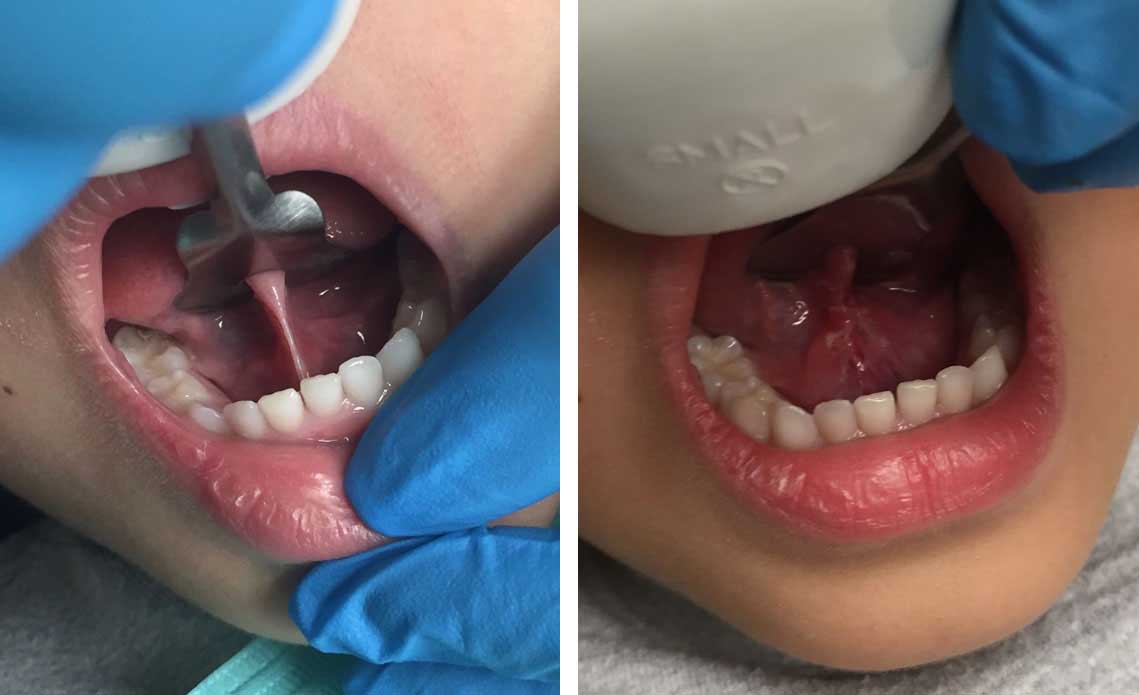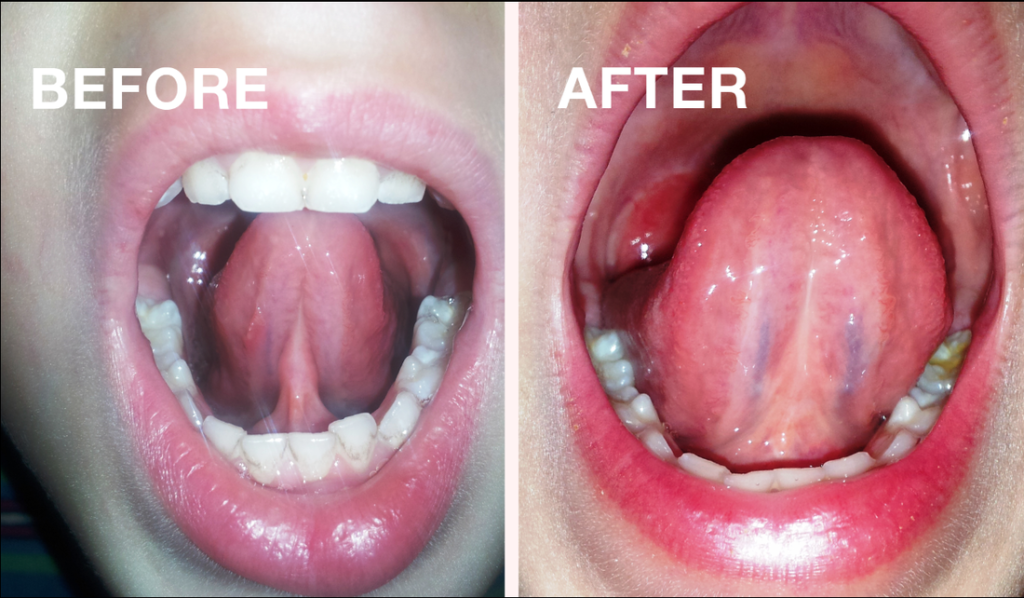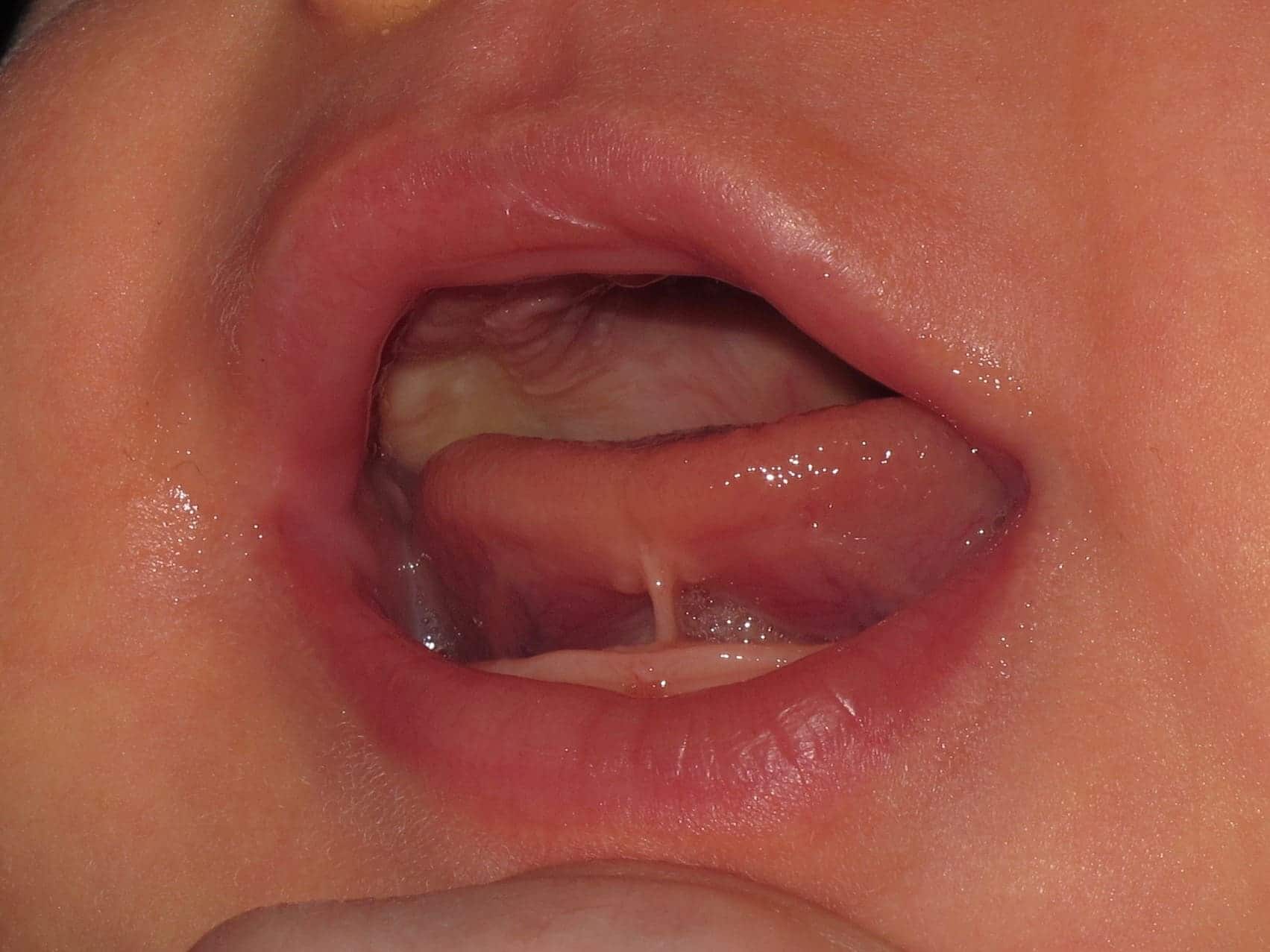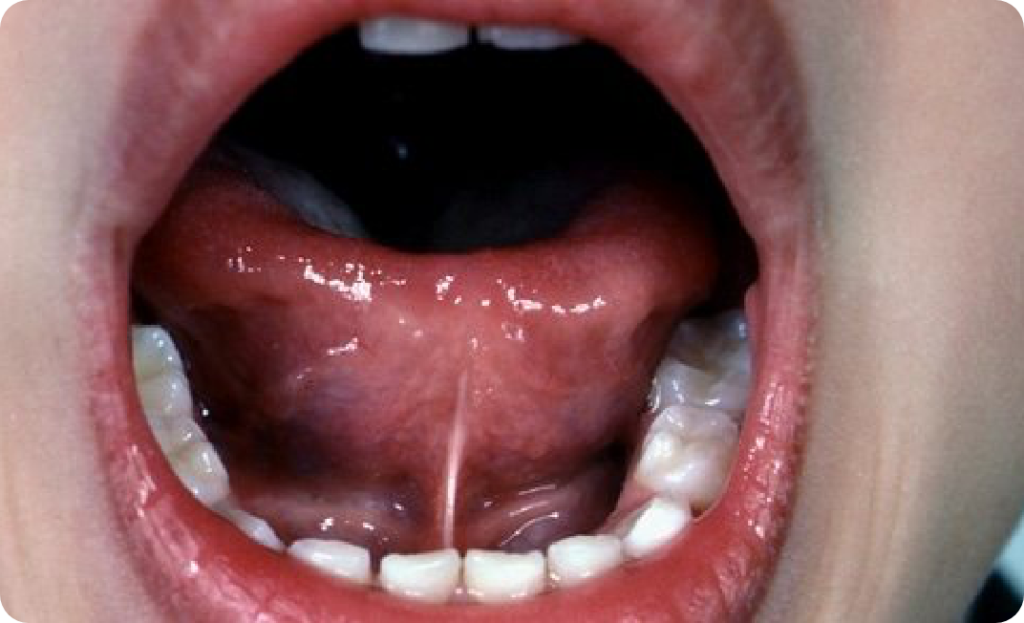Tongue Tie treatment An Osteopathic Approach Balwyn North

Holistic Tongue Tie Release StepByStep Program
Difficulty raising the tongue, moving it sideways, or sticking out the tongue. In older children or adults, tongue tie can cause symptoms like: Speech difficulties. Problems with eating, such as issues licking an ice cream cone. Inability to stick out the tongue beyond the upper lip. Issues kissing with tongue.

Family Orthodontics SmileSquad Childrens' Dentistry & Ortho
eating drinking breathing kissing Other common signs of tongue-tie in adults include: problems sticking your tongue out of your mouth past your lower front teeth trouble lifting your tongue.

Types Of Tongue Tie Treatment shesafitchick
Home / Health Library / Treatments & Procedures / Frenectomy (Tongue-Tie Surgery) Frenectomy (Tongue-Tie Surgery) A frenectomy is an oral surgery procedure that treats a lip-tie or tongue-tie. It may be used to increase your tongue's range of motion or help close a gap between two teeth.

Tongue Tie treatment An Osteopathic Approach Balwyn North
In recent years, there has been an increasing interest in tongue tie reattachment pictures, which show the process of surgically correcting the condition.
Tongue Tie Release by Laser Surgery Dr Paulose
Post Revision Sequential Pictures and Healing. During the post revision period, the surgical sites will likely heal relatively quickly. This is due in part to the environment of the mouth that is extremely favorable to the healing process. The images below outline the healing process seen in a particular patient.

Surgery Tongue Tie
Takeaway Tongue-tie is more than a just a metaphor for stumbling over your words. It's an actual oral condition that can impact many things from breastfeeding to your airway, from speech to.

TongueTie Carmen Woodland Myofunctional Therapy
Here are some pros and cons of tongue-tie surgery in newborns: Pros. Cons. may help improve breastfeeding problems. may not help improve breastfeeding problems. babies may feed better and gain.

Deeper Stretch After TongueTie Release (Frenectomy) to Prevent Reattachment YouTube
How To Choose Your Provider Appliances for Mouth Expansion Types of Ties (Including Pictures) Conferences and Trainings Appliances for Mouth Expansion Types of Ties (Including Pictures) REATTACHMENT, HEALING (INCLUDING PHOTOS), TIPS ON STRETCHES, FOODS TO AVOID, EXERCISES TO STRENGTHEN ORAL STRUCTURES, AND PAIN MANAGEMENT

Myofunctional Therapy Before and After Tongue Tie Release Enclave Dental Preetha Thomas DDS
A frenectomy, also known as a frenotomy, can refer to any procedure where binding tissue on the body is cut or modified. Frenectomy procedures are quite common, especially during the infant.

Frenectomy & Tongue Tie Laser Treatment Sydney Cosmic Smile
A tongue tie, also known as ankyloglossia, is a congenital condition in which the band of tissue that connects the tongue to the floor of the mouth is too short, tight, or thick, limiting the movement of the tongue. This can cause various difficulties, especially in infants with breastfeeding, but also in children and adults with speech and.

Tongue Tie Release Terrors and Triumphs Releasing the Child of A Myofunctional Therapist
Tongue-tie, or ankyloglossia, is a condition wherein the lingual frenum — which connects the tongue to the floor of the mouth — is too short. This can restrict the movement of the tongue. In some cases, it can also affect an infant's ability to feed. It is possible for tongue-tie to correct itself as the infant ages.

Tongue Tie Surgery Before & After Gallery in Dallas, TX
Overview Tongue-tie Enlarge image Tongue-tie (ankyloglossia) is a condition present at birth that restricts the tongue's range of motion. With tongue-tie, an unusually short, thick or tight band of tissue (lingual frenulum) tethers the bottom of the tongue's tip to the floor of the mouth, so it may interfere with breast-feeding.

Tongue Tie Symptoms Weybridge Myokids Dental
Tongue-tie, or ankyloglossia, is when an unusually short, thick or tight band of tissue tethers the bottom of the tongue's tip to the floor of the mouth. The band of tissue is called the frenulum. When it is too short or tight, it can restrict the tongue's range of motion. Up to 10% of all newborns are born with ankyloglossia.

Orofacial Myofunctional Therapy and Frenectomy tongue tie surgery and healing Judith Dember
Dr. Bhaumik diagnosed a posterior tongue tie. SPD coordinated with a Speech Language Pathologist/Myofunctional Therapist for a pre-tongue tie release consultation. Tongue Tie release was performed, and the patient had immediate improvement in tongue mobility. The parent suggested improved speech articulation. Before

Tongue Tie and Upper Lip Tie — Tiny Sparks WA
What to Expect Recovery "Tongue-tie," or ankyloglossia, is a congenital condition in which the lingual frenulum (a thin fold of tissue that connects the bottom of the mouth to the underside of the tongue) is abnormally short or tight, causing impaired tongue mobility.

Tongue Tie treatment An Osteopathic Approach Balwyn North
Share Tongue-Tie Release with Post-Op Healing Progression Photos Watch as James Thomas, DDS, MS, performs a LightScalpel CO 2 laser tongue-tie release (frenectomy) on a 5-year-old boy. Following the procedure, daily photos were taken to show healing progression. Watch how the tongue heals following the release.